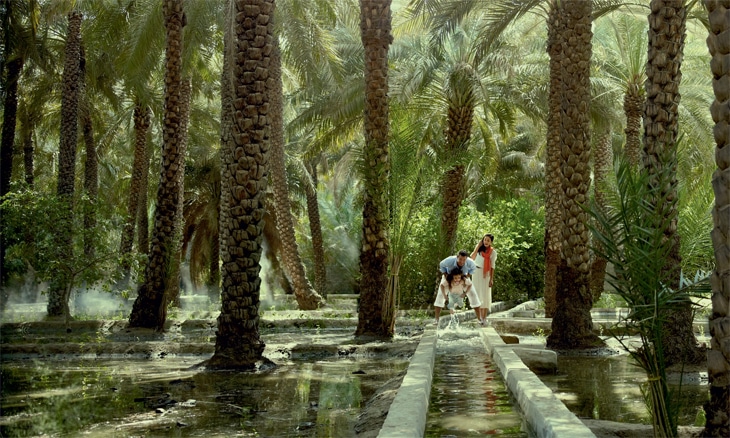Archive
The Great Oasis in Al Ain, UAE
Image Credits: Timesout Dubai
In the middle of the Rub al Khali desert resides a 4000-year-old city in Al Ain, UAE. It is the first UAE UNESCO World Heritage Site. The Empty quarters is as large as it gets, as part of the large Arabia Desert it is one of the attractions in the UAE. For many years, many camel trekkers, and desert explorers have stopped in the great oasis in Al Ain for its leafy shade and water in the middle of the desert.
Compared to the other Emirate cities Dubai and Abu Dhabi, Al Ain stands as a less modernized area in the UAE. It possesses many cultural and heritage beauties that have now become an attractive tourist destination in the nation.
There are many different types of date plantations in the great oasis in Al Ain. It is estimated that it has 147,000 date palm trees with over 100 different varieties of vegetation.
Visitors can enter the oasis through the West Gate, there are eight gates for the oasis. Normally visitors enter through the West gate so that they can gather some information, bikes, and sightseeing details before exploring the 4000 acres of land.
The desert within the desert has many historical tales behind its lavish lands. The two most told story about the oasis is the birth of Sheikh Zayed bin Sultan Al Nahyan and the British traveler who spent his life exploring the deserts.
What you can explore
Al Jahili Fort
One of UAE’s most historical buildings, which was erected in 1831 to defend the city. Al Jahili Fort is a great location to explore past events in the land. Now it’s a museum that provides a lot of information about historical events.
Take a walk in the scenic pathways
Walking through the serene wide pathways at the Al Ain is one way to explore the beautiful attractions in the area. You can spend a good 90 minutes walking around the sections and explore the area.
Falaj – An Irrigation System
You can also view the nearby model of the Falaj, an irrigation system that dates back to 3000 years ago. You can visit the two main falaj systems: Al Aini and Dawood. The water of this irrigation system is sourced from the Hajar Mountains and Jebel Hafeet.
Explore the eco-friendly buildings and wildlife
While strolling the leafy pathways in the area, you will come across many eco-friendly buildings that are built to sustain nature. And a few miles away from the center of Al Ain you can visit the Al Ain Camel Market located towards the Jebel Hafeet Mountain.
Visit the Eastern Fort
You can also visit the most popular attraction on the eastern edge of the oasis. The Easter Fort is called the Sultan Fort. It was built in 1910 by Sheikh Sultan Bin Zayed. The histori8cal building is one of the main buildings which is associated with the ruling of the Al Nahyan family and their influence in the 19th century. The fo9rt used to be the central part of the Hara of Al Ain.


